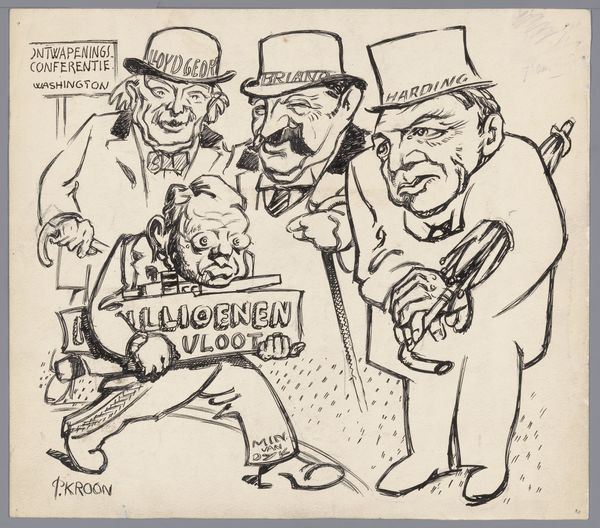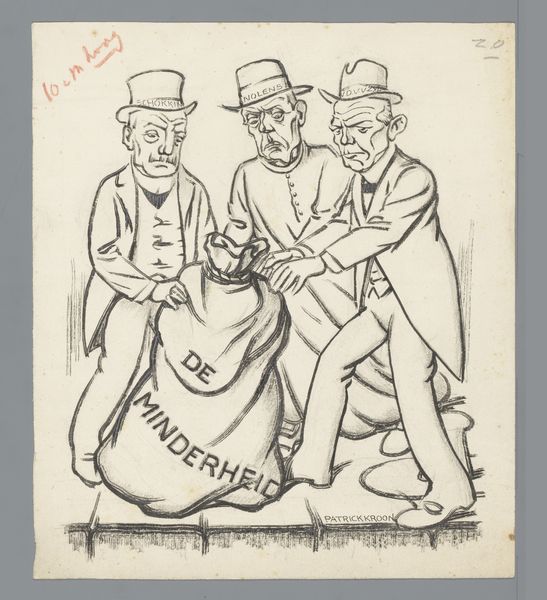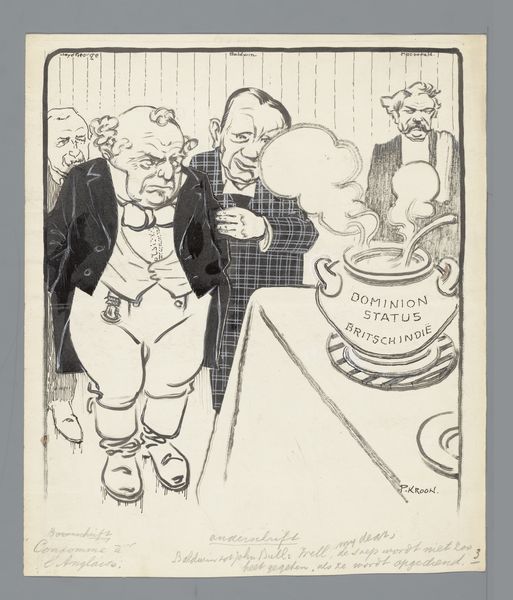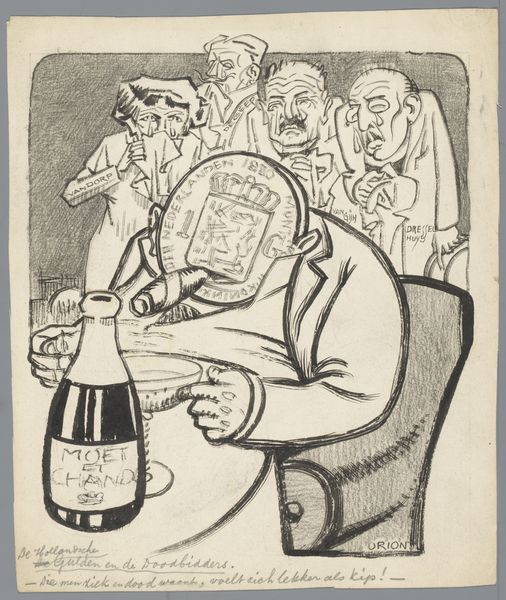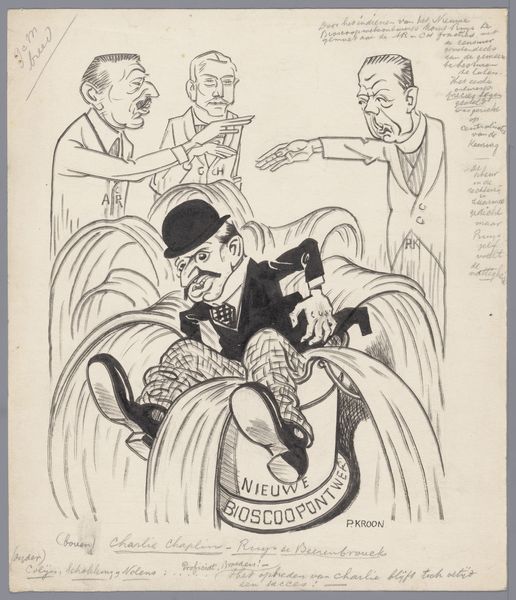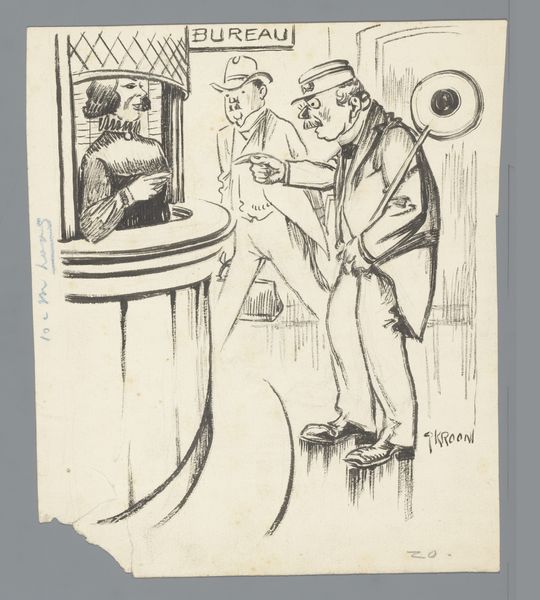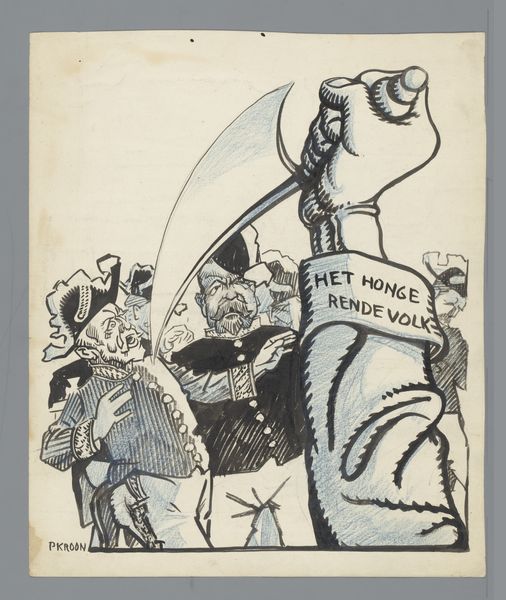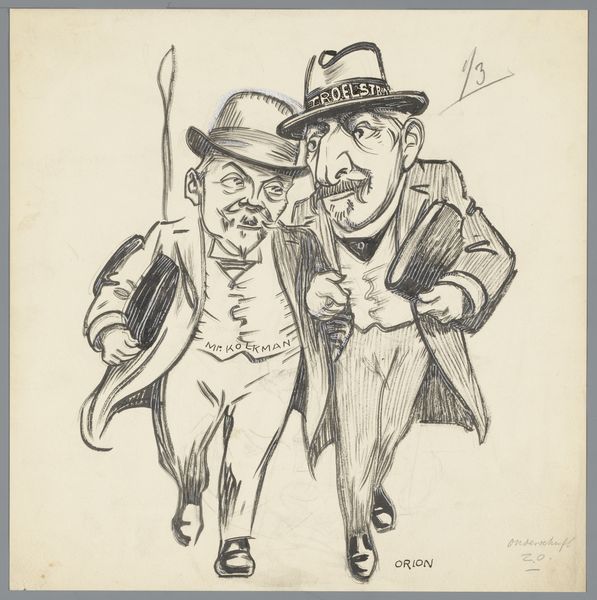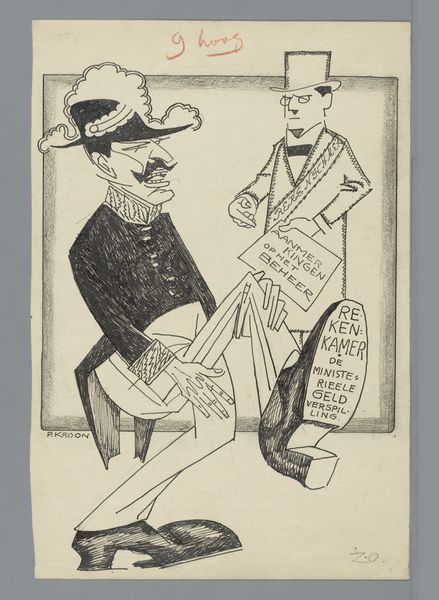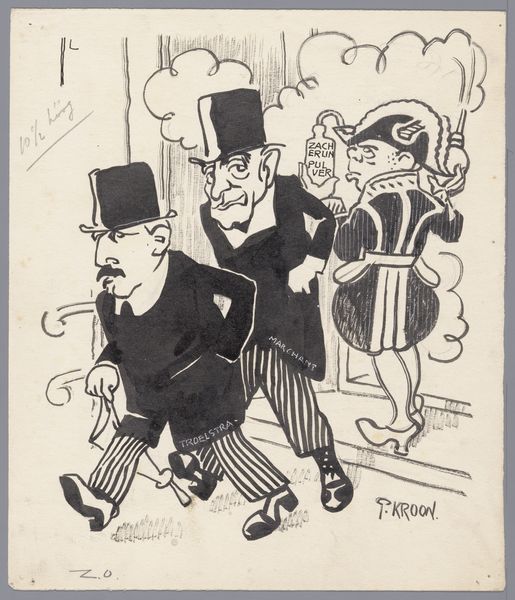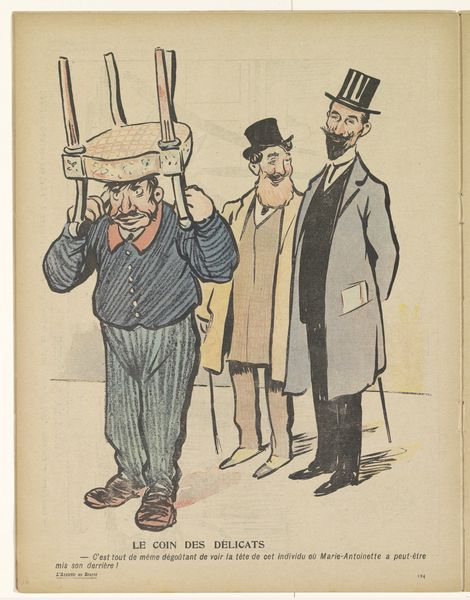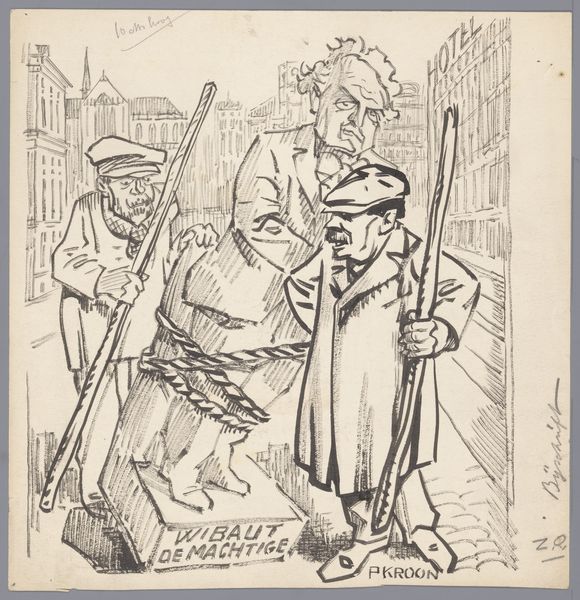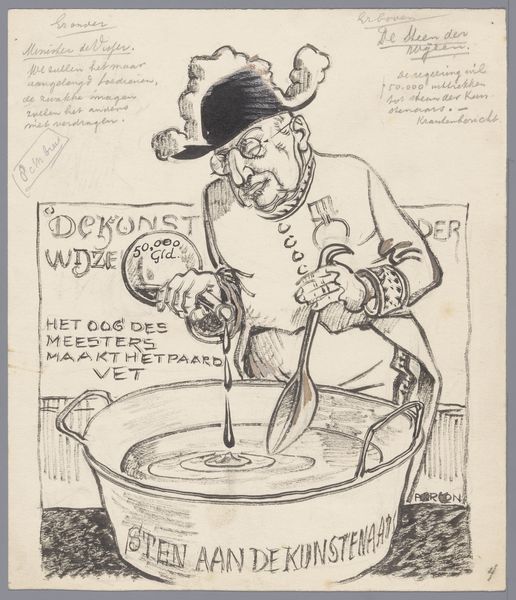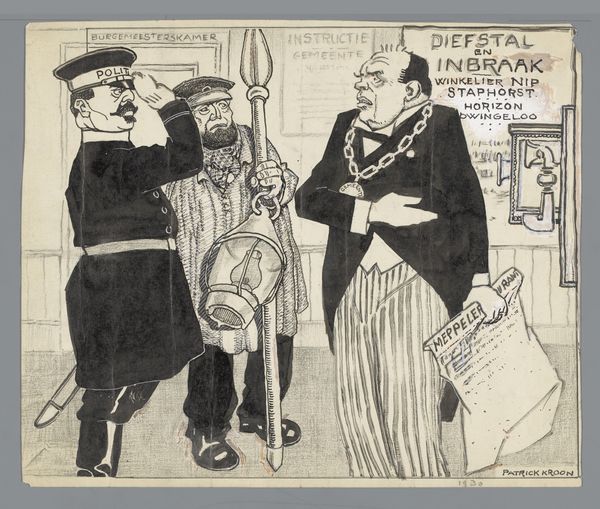
drawing, ink
#
portrait
#
drawing
#
comic strip sketch
#
symbol
#
caricature
#
cartoon sketch
#
figuration
#
personal sketchbook
#
ink
#
cartoon carciture
Dimensions: height 250 mm, width 237 mm
Copyright: Rijks Museum: Open Domain
Curator: Oh, this drawing by Patricq Kroon, entitled "Internationale Socialisten," thought to be from between 1920 and 1930, is...well, what's your first reaction to it? Editor: What a wonderfully snarky visual takedown! I’m immediately struck by its dark humor and the sense of these figures being simultaneously important and utterly ridiculous. The caricature is palpable! Curator: Precisely! The ink medium really amplifies that biting, satirical edge, wouldn’t you say? Note how each figure, presumably a leader within the socialist movement, is rendered with such exaggerated features. It feels so… mischievous. Editor: It does. And that central image, a giant glue bottle labeled “Internationale Kitlijm” or “International Glue”, is loaded. Glue as a metaphor for unity, but also, perhaps, the sticky, messy reality of holding such disparate ideologies together. We're clearly invited to examine the power dynamics and potential fractures within socialist internationalism during that interwar period. Curator: A fragile and often fractious unity indeed. And Kroon’s style – those bold, assertive lines – it just grabs you, doesn't it? It has this urgency, a kind of raw honesty. He captures these figures as both individuals and symbols. What do you see in those characterizations? Editor: They reek of bourgeois comfort. The plumpness of some, the top hats, the slightly pompous stances. It subtly critiques how the socialist movement can sometimes become co-opted by, or reflective of, the very structures it seeks to dismantle. The dove of peace on the glue bottle is almost sarcastic in that context. Curator: Good point, particularly for those named characters—Wibaut, Branting, Stauning, Troelstra, and Huysmans—these are men entrenched in political power. The "peace dove" feels weaponized against these men and their image. To be fair, socialist internationalism struggled considerably in the interwar years. Editor: Absolutely. This drawing doesn't just capture a moment, it’s a critical reflection on a historical and political project, its ideals, and its shortcomings. It raises questions about who gets to define solidarity and what unity actually means in practice. It makes me think about intersectionality. Where are the women in this image? Curator: Yes! The image definitely presents a challenge—forcing us to consider power, representation, and the often-complicated reality of social movements. But also, I just love the boldness and energy of his marks; what do you take away from your visit? Editor: This reminds me that art can hold a mirror to even the most well-intentioned movements, urging them to reflect, evolve, and truly embody their ideals. It gives us all work to do.
Comments
No comments
Be the first to comment and join the conversation on the ultimate creative platform.
